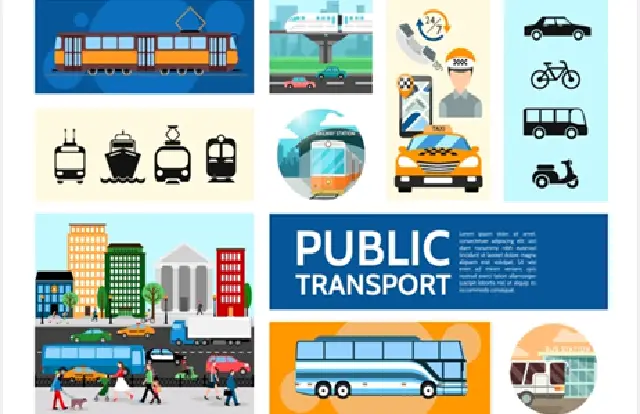Public transportation is an integral part of urban planning that plays a critical role in shaping the growth and development of cities. It has numerous benefits that go beyond providing access to transportation for residents.
One of the primary benefits of public transportation is its ability to reduce traffic congestion. Traffic congestion is a major issue in many urban areas and can cause significant delays for commuters. Public transportation systems such as buses, subways, and trains can help to reduce the number of cars on the road and alleviate traffic congestion.
Public transportation also helps to reduce air pollution and greenhouse gas emissions. Cars and other private vehicles are a significant source of air pollution, which can have serious health consequences for people living in urban areas. By reducing the number of cars on the road, public transportation can help to reduce air pollution and improve air quality.

Another important benefit of public transportation is its ability to provide accessibility and mobility to those who may not have access to private transportation. This includes people with disabilities, the elderly, and low-income individuals who may not be able to afford a car or other private transportation. Public transportation can provide these individuals with access to employment, education, healthcare, and other essential services.
Public transportation is also a key component of urban sustainability. As cities continue to grow and develop, it is important to consider the long-term impact of urban planning decisions on the environment. By promoting the use of public transportation, cities can help to reduce their carbon footprint and promote sustainable development.
1.Access to Transportation for All
Public transportation provides affordable and accessible transportation to all members of society. It allows individuals who may not have access to a personal vehicle, such as low-income residents or individuals with disabilities, to access education, employment, and other services. In addition, public transportation reduces traffic congestion and improves air quality, making cities more livable and sustainable.
2.Enhances Economic Growth
Public transportation is also essential for economic growth. It provides access to employment opportunities, allowing individuals to travel to and from work easily. Additionally, it increases access to goods and services, which stimulates economic activity. For example, a well-connected public transportation system can increase foot traffic to local businesses, boosting their revenue and contributing to the local economy.
3.Reduces Traffic Congestion
Traffic congestion is a major problem in many cities, leading to increased travel times, air pollution, and reduced quality of life. Public transportation is a key solution to reducing traffic congestion. By providing an alternative mode of transportation, individuals are less likely to rely on personal vehicles, which can reduce traffic on the roads. This leads to a more efficient transportation system, shorter travel times, and improved air quality.
4.Decreases Dependence on Fossil Fuels
Public transportation is an important tool for reducing dependence on fossil fuels. With the rise of concerns over climate change and air pollution, cities are increasingly seeking sustainable transportation options. Public transportation provides an alternative to personal vehicles, reducing greenhouse gas emissions and improving air quality. Additionally, public transportation is often powered by electricity or natural gas, further reducing the reliance on fossil fuels.
5.Promotes Social Equity
Public transportation promotes social equity by providing access to transportation to all members of society. It helps to reduce the transportation divide between low-income and high-income residents, improving access to education, employment, and other services. Additionally, public transportation often serves as a social equalizer, bringing individuals from different socioeconomic backgrounds together in a shared space.
In conclusion, public transportation is an essential component of urban planning. It helps to reduce traffic congestion, air pollution, and greenhouse gas emissions, while also providing accessibility and mobility to those who may not have access to private transportation. Public transportation is also a key component of urban sustainability and can help cities to promote sustainable development. As cities continue to grow and develop, it is important to prioritize public transportation in urban planning decisions to ensure the health, safety, and well-being of urban residents.
Also Read